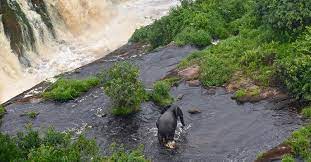©UNESCO

DÍA MUNDIAL DEL MEDIO AMBIENTE 2023
Hoy, 5 de junio, se celebra el Día Mundial del Medio Ambiente. Este 2023, el tema principal está enfocado a los problemas de los plásticos por su durabilidad y alta resistencia a la degradación.
Esta efeméride anual fue instaurada por la Asamblea General de las Naciones Unidas en 1972 con el fin de fomentar la conciencia global y las acciones positivas hacia nuestro medio ambiente.
Para la UNESCO, preservar la biodiversidad de nuestro planeta es algo fundamental para que la humanidad pueda gozar de cierto bienestar. Debido al apoyo de la Convención del Patrimonio Mundial, los sitios naturales más importantes tienen cierto reconocimiento internacional, de asistencia técnica y económica para combatir amenazas como la tala indiscriminada para hacer cultivos, la introducción de especies tóxicas y la caza furtiva.
Para poder ser inscrito en la Lista del Patrimonio Mundial, un sitio debe contener fenómenos naturales notables, representar alguna de las principales etapas de la historia del planeta, mostrar principios ecológicos y biológicos con cierto significado o estar enmarcados en un entorno natural importante. La Convenció de Patrimonio Mundial otorga este reconocimiento internacional a más del 10% de la superficie total de las áreas protegidas del mundo, aportando una protección muy importante a los recursos naturales que configuran nuestro planeta.
__
Today, June 5, is World Environment Day. This year, 2023, the main theme is focused on the problems of plastics due to their durability and high resistance to degradation.
This annual event was established by the United Nations General Assembly in 1972 to promote global awareness and positive actions towards our environment.
For UNESCO, preserving our planet’s biodiversity is fundamental to the well-being of humankind. Due to the support of the World Heritage Convention, the most important natural sites have some international recognition, technical and economic assistance to combat threats such as indiscriminate logging for crops, the introduction of toxic species and poaching.
To qualify for inscription on the World Heritage List, a site must contain remarkable natural phenomena, represent one of the major stages of the planet’s history, display ecological and biological principles of some significance, or be set in an important natural environment. The World Heritage Convention grants this international recognition to more than 10% of the total surface of the world’s protected areas, providing very important protection to the natural resources that make up our planet.
__
